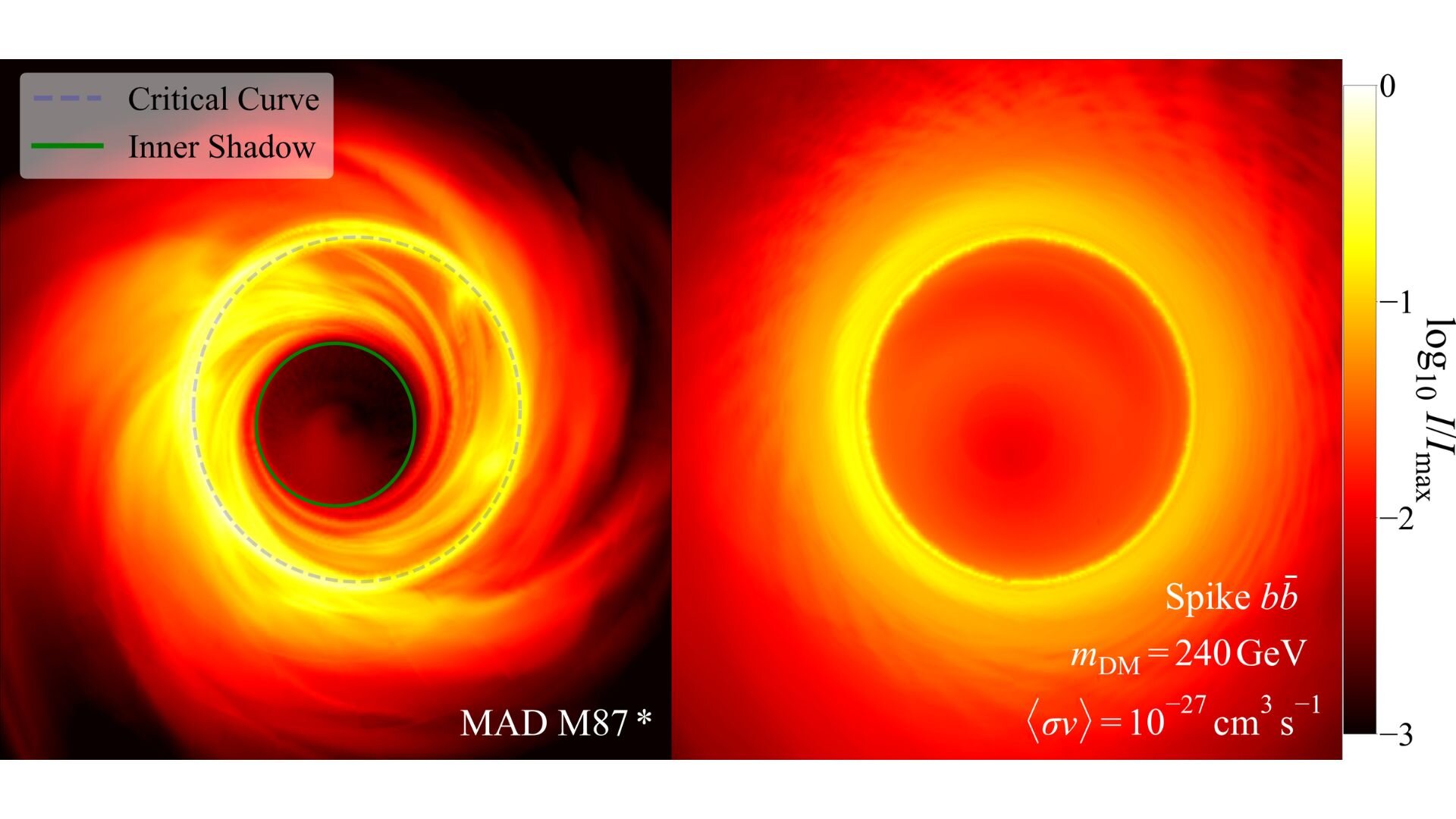⚫ Black holes become dark matter detectors
Follow us on Google News (click on ☆)
The Event Horizon Telescope (EHT), a global network of radio telescopes famous for its images of black holes, offers a new means of exploration. By studying the shadow region at the center of these images, researchers have identified an area almost devoid of ordinary matter. This faint glow makes it possible to detect very subtle signals, such as those produced by dark matter.

Simulated images of the supermassive black hole M87*.
On the left, plasma radiation; on the right, possible emission related to dark matter.
Credit: Yifan Chen.
Scientists compare the observed light distribution with detailed simulations. Their model integrates dark matter physics into the equations describing matter around the black hole. This approach could identify a particular luminous signature, more uniform than that of ordinary plasma, which might signal the annihilation of dark matter particles.
Initial results show that some hypotheses about the mass and behavior of dark matter are no longer valid. By varying physical parameters, such as plasma temperature or black hole rotation, researchers confirmed the reliability of their method. The EHT has thus enabled setting more precise limits than previous research on these invisible particles.
Future improvements to the EHT should further strengthen these analyses. Increased sensitivity will allow detection of signals a hundred times weaker, and better resolution will reveal the deepest regions of the shadow. These advances could finally make it possible to detect dark matter consistent with the theoretical values predicted by particle physics.
Astrophysicists will also rely on new data: polarization, which provides information about magnetic fields, and observations at different frequencies, useful for distinguishing emission sources. These tools could reveal whether supermassive black holes serve as natural laboratories for studying the invisible.
The Event Horizon Telescope remains a technical feat. By combining several antennas distributed across Earth, it forms a virtual instrument the size of the planet. This very long baseline interferometry system achieves sufficient precision to distinguish details on the scale of a black hole's horizon located millions of light-years away.
Dark matter, however, remains elusive. Invisible to conventional telescopes, it only betrays itself through its gravitational influence on galaxies. Researchers believe it consists of ancient particles from the Big Bang, still present in a halo around large cosmic structures. EHT observations might well provide a new clue in this quest that began over half a century ago.